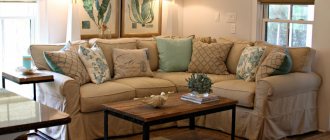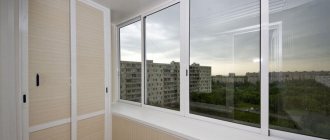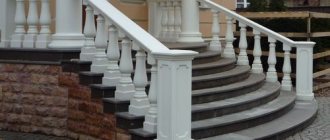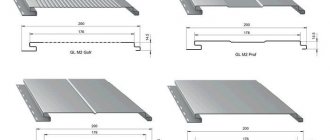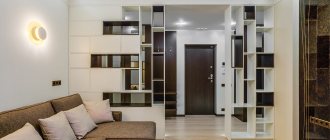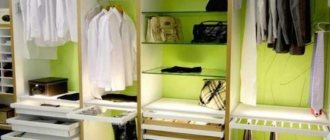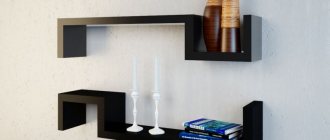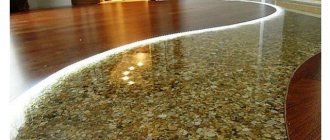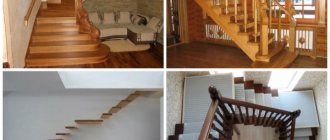Verandas are usually used in the warm season as additional usable space. Based on the type of construction, they are classified into attached and built-in. The first ones are built after the construction of the house is completed. The presence of built-in ones is provided for at the design stage of a residential building. Also, verandas can be with or without glazing. In the second case, the site is essentially a terrace equipped with a canopy. Verandas with glazing can be used not only in bad weather in the summer and without fear of rain or wind, which previously interfered with quiet gatherings, but also in the winter if they are heated. In this regard, the premises are similar to attics, into which cold attics are converted. In the south, the veranda is most often used as a gazebo or dining room. On the hottest nights, you can set up a bedroom here, where the coolness of the night comes in abundance. In the outback, equipment for a summer kitchen is moved here if there is no free separate building for these purposes. A veranda can be called not only an extension to a house, but also a separate room on the site in which a greenhouse or a hall for receiving guests (formerly for dance evenings) is equipped.
The fashion for such spacious “gazebos” came from France. And the word “veranda” itself is of Bengali origin, which in principle is not surprising if we recall the close ties of Old Europe with the countries of South Asia. Balconies and loggias, in fact, are also verandas, but they belong to city apartments in multi-storey buildings. Suffice it to remember that they are also divided into “warm” and “cold”. We will consider options for glazing verandas in private houses.
Types of foundation
Such a building requires the construction of a reliable foundation. In lightweight versions of verandas and terraces, you can do without it.
Let us examine in more detail in what cases different types of foundations are made.
Screw
Installation of piles is suitable for summer cottages, courtyards located near a reservoir, on swampy, loose soils with strong shrinkage. This is a good foundation for houses built on a slope.
Screw piles are metal pipes with a sharp tip at the end and welded blades. They are screwed in with a special drill to the required depth (below the soil freezing level).
The advantage of such a foundation is its long service life (up to 100 years). Piles are installed quickly and inexpensively.
To ensure that the terrace room can be used in winter, it is recommended to insulate the base. Read more here: “Thermal insulation of pile foundations.”
Columnar
A good view of the foundation for a wooden veranda.
The main supports are mounted in the corners of the future room, additional ones - depending on the size of the site.
Brick, logs, and metal profiles are used as pillars. The latter type is preferable because it is most convenient in construction.
Holes are dug under the posts and filled with a sand cushion. The supports are fixed in the ground and filled with concrete. Hardening time is 5–7 days. During this period, construction work is suspended.
Tape
Suitable for massive log, brick, stone structures with a large closed plan area.
Soil type: stable, rocky. It can be used on sandy, clayey soil when arranging an expanded sole.
To familiarize yourself with the types of strip foundations, follow the link.
Monolithic
It is used for permanent gazebos, verandas, summer kitchens, or when it is decided to design the terrace in the form of a separate area. It is strong, durable and can withstand high loads.
A stationary oven and barbecue are installed on a monolithic slab. Paving slabs and decking (terrace boards) are laid on top of the foundation.
The disadvantages of a monolithic base are high price, high consumption of materials and labor intensity.
Without foundation
The lightweight structure can be attached to a house without a foundation.
This option is suitable for small canopies, summer structures made of plastic, polycarbonate.
Photo: patio area at the dacha
To ensure that the terrace floor is above ground level and does not fill with water during rain, you must:
- Remove the fertile layer of soil.
- Fill the sand bed.
- Spread geotextiles over the entire area.
- Install timber logs at a slight slope from the house. The material is pre-treated with antiseptics. For stability, concrete tiles are laid under the joists.
- Lay a terrace board on top of the log.
This procedure is applicable if the owners want a wooden floor.
An alternative is carefully laid paving and concrete slabs. A good decoration is floor mosaic.
Construction materials
They are selected based on whether the terrace will be open or closed, whether the installation of windows, doors, or a warm roof will be required.
Block
They have different bases, and therefore differences in technical characteristics. Let's look at the suitable types in more detail.
Foam concrete
Refers to modern building materials. Inexpensive, lightweight, easy to transport and easy to install.
An important advantage of the foam block is that it does not absorb moisture. It is used for laying external walls, basements, and porches.
It has high rates of heat and sound insulation and is easy to cut into pieces.
When purchasing, look at the density of foam concrete: the denser it is, the stronger it is. For arranging a terrace outside, it is better to take a dense material; for interior wall decoration, any material will do.
Aerated concrete and cinder block are also used in the construction of a home site, but for laying partitions, supports, and columns indoors. This is due to the porous structure of the raw material and moisture absorption.
Expanded clay concrete
The blocks contain a lot of cement, making the raw material strong and dense. Expanded clay concrete is heat-intensive, the blocks are light. Thanks to the large dimensions – 390*190*188 mm – the material is laid quickly.
The blocks need to be connected using expanded clay concrete glue. The elements are lubricated and stacked on top of each other. If necessary, you can cut it into pieces with a grinder.
It is convenient to build a frame structure from expanded clay concrete, and finish it with other interesting material.
It is inexpensive, so you can quickly make a budget terrace out of it.
Follow the link to learn more about the properties of other block types.
Metal
Used in the construction of frames, as pillars, window openings.
If the purchased metal structures do not have an anti-corrosion coating, then you need to independently treat the surface with a protective primer or paint.
You will learn how to choose the right product from this article: “Choosing paint for a metal fence.”
Let's take a closer look at the options for metal used in the construction of the veranda.
Aluminum profile
Aluminum has gained popularity in the construction of verandas and gazebos in the countryside and in the country. It is lightweight, inexpensive, and easy to install.
Applies only to summer buildings. This is the basis of the cold glazing structure.
Forging
Masters learned to forge:
- railings;
- gratings;
- partitions;
- canopies for the porch;
- other elements.
If desired, the owner of a private estate can order ready-made parts or draw a sample, according to which the blacksmith will form the product.
The elements are installed using a welding machine.
A beautiful version of an open terrace with a wooden floor, fenced around the perimeter with wrought iron bars, and the entrance to the house is complemented by a staircase with wrought iron railings.
Metallic profile
Universal raw material for terrace frames. It is a pipe made of low-alloy steel with a thickness of 1–22 mm and a cross-section of 10–500 mm.
It can be solid or welded.
It is worth noting that:
- the pipe is easily cut into pieces with a grinder or metal scissors;
- weighs little;
- flexible;
- does not require further processing.
The frame base made of a metal profile requires mandatory finishing with other materials. Fits well into any design direction.
Tree
Natural raw materials are used as the basis of the veranda and as finishing.
Any wood parts are treated with moisture protective agents.
Board
Terrace boards are used for flooring on the terrace. Standard edged material serves as the raw material for cladding the structure frame.
You can decorate the finished veranda with carved parts, which are purchased separately.
The boards are painted and varnished. In some cases, the brushing technique is used to imitate antiquity.
timber
It is made from solid wood or by gluing together several boards.
Shape – square, rectangular.
Depending on the number of sides processed, it can be two-, three- or four-edged.
Separately, we can highlight the rounded timber - the dimensions of the sides strictly correspond to the location and parameters of the center. Due to this, when drying, the material retains its shape, remains as strong and does not deform.
Lumber is resilient and reliable.
The cost depends on the type of wood used. The cheapest timber will be made from pine and spruce. Larch, oak, and ash are more expensive, but their service life is many times greater than that of conifers.
If the project specifies a timber frame, then during construction take into account the expansion of the raw material under the influence of the environment and always leave a 2-3 mm margin.
Log
Round tree trunk. Despite its heavy weight, it is highly durable and durable.
A log veranda would be appropriate if the house is made of logs.
A reliable foundation will have to be poured under the structure.
Users often search for:
- Types of wooden gazebos
- Country version of a summer kitchen
Brick
If according to the plan you need to attach a brick veranda, then it is worth considering in advance the presence of a capital foundation.
You can lay out only the supports, and sheathe the partitions with plastic or wood.
When decorating a closed veranda, the brick walls are diluted with glass window openings. The more there are, the neater the building will look.
The façade is made of red facing brick and does not require further finishing. But walls made of silicate (white) are recommended to be plastered or laid with decorative tiles, since this type tends to collapse under the influence of moisture.
The terrace will be durable and strong. But its creation will take a lot of time, effort and money.
Roof material
It is selected depending on how often you will be indoors: all year round or only in warm weather.
Polycarbonate
Polymer material used to decorate garden houses, greenhouses, gazebos, verandas.
Among the advantages of polycarbonate:
- Flexibility. The sheets easily take the desired shape.
- Good light transmittance. Available completely transparent, like glass, or with different levels of shading.
- Light weight ensures ease of transportation and installation.
- It is resistant to any external manifestations (moisture, temperature changes).
- The choice of colors allows you to choose the one that will most harmoniously combine with the design of the house.
- Keeps heat indoors.
The disadvantage is that with a small thickness of the sheet, the risk of damage during impact increases. Thin polycarbonate will crack in heavy hail.
The sheets are laid on top of a metal or wooden frame. When fastening, it is important to adhere to basic requirements and not screw the screws to the material too tightly.
A room with such a roof turns out to be bright, and you can save on lighting.
But in winter it will be cold under such a roof.
Metal tiles
A roof covered with metal tiles is an excellent option for a closed terrace.
In appearance, these are steel, aluminum or stainless steel sheets, shaped to imitate standard tiles. An anti-corrosion coating is applied on top of the metal and painted in the desired shade.
The elements are lightweight, so attaching them is easy.
The cost depends on the type of raw material, the quality of the protective layer and the thickness of the metal.
During installation you will need a screwdriver with screws. When fixing, all elements must fit tightly to each other.
There are metal tiles on sale with ready-made fasteners, which makes their installation easier.
If purchased from the same manufacturer, this material on the roof of the house can be combined well with corrugated sheeting on the roof of the veranda and vice versa.
Profiled sheet
Thin rolled stainless steel sheets with wavy relief.
Thickness - 1-4 mm. Wide palette. Making a roof from this material is quick and convenient.
Other benefits include:
- large sheet sizes speed up fastening;
- The corrugated sheet is not subject to corrosion and other influences;
- flexible.
The disadvantage of corrugated board is its softness. If you press down on the surface with your elbow, you will leave a dent on it that cannot be corrected.
Photo. Methods for installing profiled sheets: in 1 row, in several rows, on triangular slopes.
The sheets are laid on top of the transverse wooden joists. The material should overlap slightly. Fasteners - screws with a rubberized washer - are screwed in through one or two waves.
Soft roof
The raw material is a mixture of bitumen and fiberglass. It looks like a plastic flexible sheet.
It has high strength and a variety of color tones.
Does not require maintenance or additional finishing.
Popular shapes:
- rhombus;
- rectangle;
- hexagon.
The disadvantage of flexible tiles is that when exposed to high temperatures, they begin to deform over time.
They make such a roof like this:
- A wooden base made of fiberboard and MDF sheets is laid evenly.
- A layer of waterproofing material is placed on top to protect the wooden base from deformation. Plastic film will be cheap.
- Sheets of flexible tiles are attached from the bottom up. The top sheet overlaps the previous one.
- The corner and upper part of the material is fixed with screws with a hidden head and nails.
A soft roof is well suited for a closed veranda.
Follow the link to read a description of the process and materials that are best used to hem the ceiling
Glazing methods
When glazing a structure, it is necessary to distinguish between methods that are suitable for summer or closed terraces. In the latter case, the quality of the double-glazed windows is important, on which depends how well the heat will be retained inside the room.
If the terrace is located at the entrance of the house, then it is better to use frameless glazing. Residents have a panoramic view of the estate, which can be admired all year round.
Construction of a terrace
An open deck with a fence is called a terrace, which is erected on a prepared foundation or added to the house.
Extension of a terrace requires the following materials:
- railings, wooden balusters;
- wooden posts with a diameter of 10x10 cm;
- for foundation construction: pillars, piles;
- roofing materials of various types: ondulin, corrugated sheet;
- planed or grooved boards for flooring.
You can use other, additional materials. If the terrace is small and intended for summer use, it can be made without a roof.
What types of verandas are there?
Before adding an additional platform to your house, there are several important points to consider:
- Where will the sunlight fall (directly, from behind, from the side of the veranda) so that the room is not in the shade.
- Soil properties at the site.
- The view from the terrace. It’s good if the exit is made towards the garden, then the residents will be able to admire it.
- Styling of the house and surrounding buildings.
Depending on the assigned functions, there are several types of terraces.
With oven (barbecue, grill)
An extension with a barbecue or barbecue is often created open.
The site is adjacent to the house or is installed as a separate recreation area. The space is visually divided into 2 parts: a place for cooking and eating.
An exit is made in the roof for a chimney pipe.
The masonry of the barbecue oven is made of refractory (fireclay) bricks. The cladding is optionally made of stone and tiles.
Due to the large dimensions and weight, it is recommended to pour a strip foundation under such a platform.
When choosing furniture and decor, you need to take into account fire safety requirements.
Open
It is a canopy with railings. Often becomes an extension of the porch. Another option is a separately mounted platform without a roof near the house.
Do you want to learn how to build a pergola out of wood? Follow the link.
The design is simple, so it is easy to build with your own hands.
Does not require pouring a massive foundation. It is enough to install the beams at a slope for water drainage, and lay the decking on top. An alternative is laying the floor from paving or concrete tiles.
An open veranda is a place for summer relaxation in the fresh air. Does not require large investments and time.
Furniture should be selected in such a way that it is resistant to ultraviolet rays, high humidity, and does not require special care.
Semi-closed
It differs from the previous type in that it has a roof and partially walls.
The functions of the latter are performed by:
- curtains made of thick fabric;
- wooden gratings;
- partitions made of plastic, polycarbonate;
- large window openings;
- polyethylene film.
A semi-closed veranda can be used in summer and warm autumn. The structure will be a good shelter from rain and strong winds.
In the form of a platform
It is recommended to install such a structure in southern regions where it rains infrequently.
Mounted separately from the house, near the garden or pool. When equipped with an oven or barbecue, a concrete base must be poured. In other cases, it is enough to lay paving slabs or stone slabs.
Since the terrace is constantly outdoors, only moisture-resistant materials must be used in construction.
With railing fencing (with balusters)
An important part of an open extension, especially when there are small children and animals in the house.
The railing serves as a low fence and at the same time as decoration. Carved balusters look beautiful in combination with a wooden house.
Sold in ready-made sections. You can order production from a master according to the proposed scheme. Choose narrow or wide elements - the choice is yours.
Insulated with heating
This is a closed veranda, which becomes a continuation of the main building and an additional room. It is glazed and equipped with a fireplace or other heating equipment.
The extension should be located on the sunny side so that enough light enters the room all year round.
Article on the topic: “How to build a gazebo with a fireplace.”
Light curtains are hung on the windows. The furniture is chosen to be comfortable and not clutter up the space. Additional lamps and fixtures are attached. An important design condition is to create a relaxed, homely comfort.
Economical option
These are small-area structures that are created on a limited budget. On such a terrace there is no place for a bulky sofa or fireplace.
It would be much more appropriate to place several wicker chairs with a table for drinking tea in nature, place pots of flowers around the perimeter, install several ceiling lamps, and lay a bright rug at the entrance.
Projects of houses with a veranda, with a terrace
Number of projects 2714
- 5 rooms
- 2 bathrooms
Project of the Marshal Zhukov House
- To favorites
- 140² Total area
- 13 x 7m Construction area
from 2,890,000 rub.
Construction time individually
- 5 rooms
- 3 bathrooms
House Project No. 13004-FK
- To favorites
- 153² Total area
- 10 x 11m Construction area
from 6,181,767 rub.
Construction time individually
- 5 rooms
- 2 bathrooms
Sandra House Project
- To favorites
- 246.3² Total area
- 17 x 12m Construction area
from 3,325,050 rub.
Construction time individually
- 8 rooms
- 3 bathrooms
Altai House Project
- To favorites
- 286.5² Total area
- 13 x 15m Construction area
from 7,318,495 rub.
Construction time individually
- 1 room
- 1 bathroom
LATO 36 DIY House Project
- To favorites
- 36² Total area
- 6 x 7m Construction area
from 1,051,700 rub.
Construction time individually
- 4 rooms
- 2 bathrooms
Provence House Project
- To favorites
- 198.7² Total area
- 15 x 13m Construction area
from 2,682,450 rub.
Construction time individually
- 6 rooms
- 2 bathrooms
Project AS-2131
- To favorites
- 191.6² Total area
from 2,586,600 rub.
Construction time individually
- 5 rooms
- 2 bathrooms
House Project PD-352-1-251 / Crimea
- To favorites
- 250.76² Total area
- 14 x 14m Construction area
from RUR 2,727,698
Construction time individually
- 8 rooms
- 4 bathrooms
House Project DOK-305 / Beveren
- To favorites
- 305.5² Total area
- 14 x 14m Construction area
from 5,499,000 rub.
Construction time individually
- 5 rooms
- 2 bathrooms
Sosenki House Project
- To favorites
- 117² Total area
- 14 x 8m Construction area
from 1,579,500 rub.
Construction time individually
- 4 rooms
- 2 bathrooms
Birgit House Project
- To favorites
- 290.1² Total area
- 15 x 10m Construction area
from 3,770,000 rub.
Construction time individually
- 4 rooms
- 2 bathrooms
Danna House Project
- To favorites
- 152.8² Total area
- 11 x 8m Construction area
from 3,496,000 rub.
Construction time individually
- 4 rooms
- 2 bathrooms
House Project DOK-184 / Bavaria
- To favorites
- 184.7² Total area
- 11 x 12m Construction area
from 3,324,600 rub.
Construction time individually
- 6 rooms
- 3 bathrooms
House Project 17-293
- To favorites
- 293² Total area
from 3,955,500 rub.
Construction time individually
- 7 rooms
- 3 bathrooms
House Project Karelia-264
- To favorites
- 264² Total area
- 17 x 13m Construction area
from 3,564,000 rub.
Construction time individually
- 6 rooms
- 2 bathrooms
Kornilovsky House Project 12x15
- To favorites
- 152² Total area
- 12 x 15m Construction area
from 2,052,000 rub.
Construction time individually
- 5 rooms
- 2 bathrooms
House Project DOK-186 / Verdun
- To favorites
- 186.5² Total area
- 11 x 13m Construction area
from 3,357,000 rub.
Construction time individually
- 3 rooms
- 1 bathroom
Musical House Project
- To favorites
- 89² Total area
- 8 x 6m Construction area
from RUR 498,342
Construction time individually
- 7 rooms
- 2 bathrooms
Arabesque House Project
- To favorites
- 262.3² Total area
- 15 x 14m Construction area
from 4,331,250 rub.
Construction time individually
- 4 rooms
- 2 bathrooms
Esquire Mini House Project
- To favorites
- 140² Total area
- 8 x 10m Construction area
from 2,165,400 rub.
Construction time individually
View all projects
A covered terrace where you can spend time in any weather Source kayrosblog.ru
Drinking tea with your family on a beautiful summer morning or evening gatherings with friends in the fresh air without leaving home - what could be the best way to take a break from everyday worries? A veranda or terrace to the house built on the site will make your dream of a complete country holiday come true . In addition to functional properties, such buildings also carry a design idea, giving the appearance of a cottage or dacha a single, complete image of a truly comfortable home. Today, there are many designs, styles, and designs for both the exterior and interior design of a veranda or terrace. For those who are choosing which veranda to add to their house, projects, photos and layouts will be excellent inspiration.
Examples of plans and drawings
Below is a visual diagram of the design of a medium-sized terrace.
Here is an example of a drawing of a future veranda roof:
The figure below shows an example of a combined version of a bathhouse with a terrace:
Here is an extension with a domed roof:
This is the project of the first floor of a house with a terrace:
A visual representation of the construction of a terrace floor:
If you can’t develop a drawing yourself, then you should contact specialists who will create a project according to your wishes, and a team of builders will arrange a turnkey veranda.
Photo of the extension to the house
Read here A veranda attached to a house - beautiful projects, tips for choosing a design and options for extensions (125 photos and videos)
Did you like the article?
0
Interior arrangement depending on purpose
The finished room can perform many functions. Here are the most popular ones.
Summer living room
There are many windows inside the building. The finishing is done in light colors. A table is placed in the center, surrounded by chairs, comfortable armchairs or a small sofa. A large chandelier with several light bulbs is mounted in the middle of the ceiling.
Additional items:
- bright sofa cushions;
- bedspreads, blanket;
- vases with fresh flowers in the center of the table.
Furniture can be made of wood, wicker or plastic.
Fireplace
Set up in both open and closed verandas. The fireplace is created by hand and runs on wood. In this case, it is important to provide space in the roof for the chimney and carefully consider the location so that the smoke does not interfere with the rest of residents and neighbors. Furniture is selected from fireproof materials.
A simpler solution is to install an electric fireplace. It can be installed in any part of the room and does not require a chimney. There are no restrictions in the choice of decor.
Since the fireplace occupies the main place in the room, the arrangement of the room takes place around this element. Not far from it there are comfortable armchairs and a small table for tea drinking.
Dinner Zone
May be small in area. The closed terraces are designed as a dining room. A large table is placed in the center, covered with a tablecloth, with chairs, benches or armchairs. In the corner there is a sideboard with the necessary dishes and other kitchen appliances.
An interesting option for replacing a standard table with a bar counter with chairs on high legs.
Barbecue complexes are installed in open sheds where you can cook and heat food.
Rest zone
In this case, the room is furnished:
- comfortable sofa;
- swing chair;
- hammock;
- sofa.
A wicker rocking chair with a blanket is perfect. You can put a bookcase with your favorite books at the end of the room, and a coffee table near the sofa.
Soft pillows placed on the sofa will provide comfort.
In an enclosed space, it is better to make adjustable lighting and install additional lamps.
Interior finishing methods
For open terraces it is better to take moisture-resistant materials:
- stone;
- wood (coated with antiseptics);
- brick;
- plastic;
- stainless steel, aluminum.
Decorative elements should not fade in the sun.
In closed extensions there are no restrictions in the choice of finishes. The floor is laid with terrace boards, laid out with pieces of stones and tiles.
The walls are plastered, covered with slats, and painted in the desired color.
To give wooden things an old look, they are brushed. This method is often used when decorating a veranda in the Provence style.
Will give comfort:
- street lamps placed at the entrance;
- bright rug;
- flowers in flowerpots;
- curtains made of light fabrics;
- small wall lamps.
All decorations should create an atmosphere of comfort in the room, and not clutter it.
Material
Looking through the photo of the extension to the house, you can pay attention to one significant detail: the material for its construction is chosen either the same as the material of the walls of the house, or lighter.
Important: a proper extension to an old house is built from lighter material. This reduces the risk of negative consequences from its construction.
The most common extensions are:
- from timber;
- frame;
- brick;
- from foam blocks
At the same time, frame extensions occupy a leading position due to their low cost, ease and speed of installation, high reliability and the possibility of turning them into full-fledged living quarters.
Photo gallery - interesting examples of terraces
Below are photos of open and closed extensions, designed in different design directions.
Construction of a terrace is an excellent opportunity to expand the area of the house and create a cozy relaxation area next to the garden or lawn. The choice of structural forms and design directions will help to realize any original ideas.Construction of a veranda
The project of adding a veranda is more complicated than a terrace; more resources will be required. The veranda is a closed building. For construction you will need the following materials:
We recommend reading:
Construction of a chicken coop for a summer residence - how to make simple and high-quality chicken coops (105 photos + video)- Construction of a barn for a summer residence: a step-by-step description of the construction of a barn. Modern and traditional materials for making a barn (100 photos and videos of construction)
DIY porch - 135 photos of the best projects and video description of the main stages of construction
- Entrance door;
- roofing raw materials;
- lining of a suitable color;
- tongue and groove board, 3.5-5 cm thick;
- pillars with a diameter of 4x10 cm for the frame, jibs of the same size.
A beautiful design for a veranda extension is gaining popularity: full glazing of the structure.
You can make the exterior decoration with ordinary wood and install windows. If windows are not included in your project, you can make ventilation.

